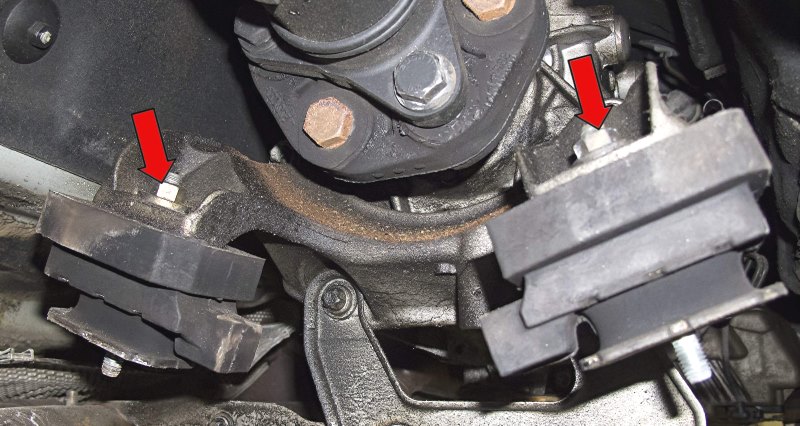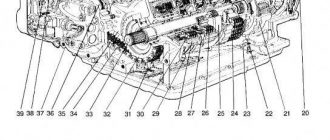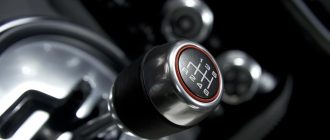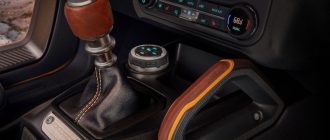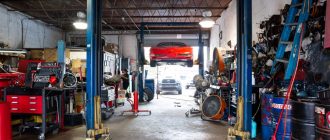What is a Transmission Mount on a Car?
A transmission mount is a component that connects the transmission to the car’s frame or subframe. Its primary function is to provide support and stability to the transmission, preventing it from excessive movement or vibration during operation. Transmission mounts are typically made of rubber or polyurethane, which absorb vibrations and reduce noise levels.
Types of Transmission Mounts
There are several different types of transmission mounts, each designed for specific applications and vehicle configurations:
– Dog Bone Mount: A dog bone mount is a common type of transmission mount that resembles a dog bone in shape. It consists of two metal brackets connected by a rubber or polyurethane component.
– Torque Rod Mount: A torque rod mount is typically used in vehicles with rear-wheel drive. It consists of a metal rod that connects the transmission to the suspension or frame.
– Crossmember Mount: A crossmember mount is a more rigid type of mount that utilizes a crossmember to support the transmission. It is often used in heavy-duty vehicles or performance applications.
– Side Mount: A side mount is a type of transmission mount that attaches to the side of the transmission. It is commonly found in front-wheel drive vehicles.
– Cradle Mount: A cradle mount is a more complex type of mount that encapsulates the transmission within a metal cradle. It provides maximum support and stability.
Function of Transmission Mounts
Transmission mounts serve several critical functions in a vehicle’s drivetrain:
– Vibration Isolation: Transmission mounts absorb vibrations generated by the transmission during gear changes, acceleration, and deceleration. They isolate these vibrations from the rest of the vehicle, reducing noise and improving ride comfort.
– Support: Transmission mounts provide support to the transmission, preventing it from sagging or moving excessively under load. They ensure proper alignment of the transmission with other drivetrain components.
– Torque Management: Some transmission mounts, such as torque rod mounts, are designed to manage torque produced by the transmission. They prevent excessive twisting or rotation of the transmission, reducing strain on other drivetrain components.
Symptoms of Failing Transmission Mounts
Over time, transmission mounts can wear out or fail due to factors such as age, excessive vibration, or extreme temperatures. Here are some common symptoms of failing transmission mounts:
– Excessive Vibration: Vibrations felt through the steering wheel, floorboard, or seats could indicate worn or torn transmission mounts.
– Shifting Issues: Difficulty shifting gears or a feeling of increased effort when shifting can be caused by excessive movement or misalignment of the transmission due to failing mounts.
– Noise: Clunking or rattling noises coming from the transmission area can be a sign of loose or broken transmission mounts.
– Leaking Fluid: If the transmission mounts are damaged, they may leak transmission fluid, resulting in fluid loss and potential drivability issues.
Replacement of Transmission Mounts
If transmission mounts are determined to have failed, it is crucial to replace them promptly. Ignoring failing transmission mounts can lead to further damage to the transmission and other drivetrain components. Here are the general steps involved in replacing transmission mounts:
1. Safety Precautions: Park the vehicle on a level surface, engage the parking brake, and disconnect the negative terminal of the battery.
2. Access the Transmission: Raise the vehicle using a jack and support it securely on jack stands. Remove any underbody panels or covers that may obstruct access to the transmission mounts.
3. Disconnect Components: Disconnect any components that may interfere with the removal of the transmission mounts, such as exhaust pipes, drive shafts, or electrical connectors.
4. Remove Old Mounts: Locate the transmission mounts and remove the bolts or nuts that secure them. Carefully detach the old transmission mounts from the transmission and frame.
5. Prepare New Mounts: Inspect the new transmission mounts for any damage or defects. If necessary, lubricate the rubber or polyurethane components with a silicone-based lubricant.
6. Install New Mounts: Align the new transmission mounts on the transmission and frame. Tighten the bolts or nuts securely, following the manufacturer’s specified torque values.
7. Reconnect Components: Reinstall any components that were disconnected during the process, such as exhaust pipes, drive shafts, or electrical connectors.
8. Lower Vehicle: Carefully lower the vehicle from the jack stands and remove the jack. Tighten the wheels to the manufacturer’s specifications.
9. Test Drive: Start the vehicle and conduct a test drive to ensure proper functionality and absence of any unusual vibrations or noises.
Maintenance and Prevention
Regular maintenance and proper driving habits can help extend the lifespan of transmission mounts:
– Regular Inspections: Have transmission mounts inspected periodically by a qualified mechanic, especially if you notice any symptoms of failure.
– Avoid Harsh Shifting: Shifting gears abruptly or excessively can put strain on transmission mounts. Practice smooth and timely gear changes.
– Reduce Excessive Vibration: Avoid driving over rough roads or hitting potholes at high speeds. Excessive vibration can contribute to premature wear of transmission mounts.
– Maintain Proper Fluid Levels: Ensure that transmission fluid levels are maintained according to manufacturer’s recommendations. Low fluid levels can lead to increased transmission temperature and vibration, which can damage transmission mounts.
– Conclusion
Transmission mounts are essential components that play a crucial role in the smooth operation and durability of a vehicle’s drivetrain. By understanding their function, recognizing symptoms of failure, and following proper maintenance practices, you can ensure that your transmission mounts perform optimally, providing a comfortable and safe driving experience.
